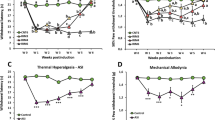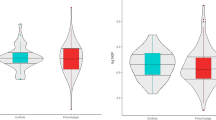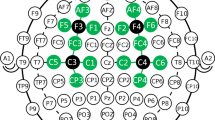Abstract
Despite extensive research, the pathogenesis of pain in fibromyalgia syndrome is incompletely understood. Fibromyalgia pain is consistently felt in deep tissues including ligaments, joints and muscles. Increasing evidence points towards these tissues as relevant contributors of nociceptive input that might either initiate or maintain central sensitization, or both. Persistent or intense nociception can lead to transcriptional and translational changes in the spinal cord and brain resulting in central sensitization and pain. This mechanism represents a hallmark of fibromyalgia and many other chronic pain syndromes, including irritable bowel syndrome, temporomandibular disorder, migraine, and low back pain. Importantly, after central sensitization has been established, only minimal nociceptive input is required for the maintenance of the chronic pain state. Other factors, including pain-related negative affect, have been shown to significantly contribute to clinical fibromyalgia pain. An improved understanding of the mechanisms that characterize central sensitization and clinical pain will provide new approaches for the prevention and treatment of fibromyalgia and other chronic pain syndromes.
Key Points
-
Fibromyalgia represents the extreme end of the spectrum of chronic musculoskeletal pain syndromes and is characterized by chronic widespread pain, insomnia, fatigue, distress and mechanical allodynia
-
Although patients with fibromyalgia display extensive cutaneous hyperalgesia, most of their pain complaints are related to deep tissues like muscles, joints and ligaments
-
Abnormal pain sensitivity in fibromyalgia is not limited to mechanical stimuli, but also includes sensitivity to thermal, electrical, and chemical stimuli
-
Pain-processing abnormalities in fibromyalgia include temporal summation (wind-up) of second pain as well as peripheral and central sensitization
-
There is evidence for abnormal antinociceptive mechanisms in fibromyalgia
-
Effective fibromyalgia treatments include cognitive behavioral therapy, aerobic exercise and pharmacologic therapies
This is a preview of subscription content, access via your institution
Access options
Subscribe to this journal
Receive 12 print issues and online access
$209.00 per year
only $17.42 per issue
Buy this article
- Purchase on Springer Link
- Instant access to full article PDF
Prices may be subject to local taxes which are calculated during checkout




Similar content being viewed by others
References
Wolfe F et al. (1990) The American College of Rheumatology 1990 criteria for the classification of fibromyalgia. Report of the Multicenter Criteria Committee. Arthritis Rheum 33: 160–172
Russell IJ et al. (1994) Elevated cerebrospinal fluid levels of substance P in patients with the fibromyalgia syndrome. Arthritis Rheum 37: 1593–1601
Sorensen J et al. (1998) Hyperexcitability in fibromyalgia. J Rheumatol 25: 152–155
Kosek E et al. (1995) Increased pressure pain sensibility in fibromyalgia patients is located deep to the skin but not restricted to muscle tissue. Pain 63: 335–339
Wolfe F et al. (1995) The prevalence and characteristics of fibromyalgia in the general population. Arthritis Rheum 38: 19–28
Loeser JD (1991) What is chronic pain? Theor Med 12: 213–225
Merskey H and Bogduk N (Eds.; 1994) Classification of chronic pain: description of chronic pain syndromes and definition of pain terms. Seattle: IASP Press
Bayer TL et al. (1991) Situational and psychophysiological factors in psychologically induced pain. Pain 44: 45–50
Graven-Nielsen T et al. (2002) Peripheral and central sensitization in musculoskeletal pain disorders: an experimental approach. Curr Rheumatol Rep 4: 313–321
Granot M et al. (2001) Simultaneous recording of late and ultra-late pain evoked potentials in fibromyalgia. Clin Neurophysiol 112: 1881–1887
Kosek E et al. (1996) Sensory dysfunction in fibromyalgia patients with implications for pathogenic mechanisms. Pain 68: 375–383
Staud R et al. (2003) Temporal summation of pain from mechanical stimulation of muscle tissue in normal controls and subjects with fibromyalgia syndrome. Pain 102: 87–95
Acasuso-Diaz M et al. (1998) Topical capsaicin versus ketoprofen in primary fibromyalgia syndrome. Br J Rheumatol 37: S151
Reddy SS et al. (2000) Tender point injections are beneficial in fibromyalgia syndrome: a descriptive, open study. J Musculoskelet Pain 8: 7–18
Arendt-Nielsen L et al. (2003) Central sensitization in fibromyalgia and other musculoskeletal disorders. Curr Pain Headache Rep 7: 355–361
Desmeules JA et al. (2003) Neurophysiologic evidence for a central sensitization in patients with fibromyalgia. Arthritis Rheum 48: 1420–1429
Staud R (2004) New evidence for central sensitization in patients with fibromyalgia. Curr Rheumatol Rep 6: 259
Simms RW (1998) Fibromyalgia is not a muscle disorder. Am J Med Sci 315: 346–350
Sprott H et al. (1998) Immunohistochemical and molecular studies of serotonin, substance P, galanin, pituitary adenylyl cyclase-activating polypeptide, and secretoneurin in fibromyalgic muscle tissue. Arthritis Rheum 41: 1689–1694
Sprott H et al. (2004) Increased DNA fragmentation and ultrastructural changes in fibromyalgic muscle fibres. Ann Rheum Dis 63: 245–251
Salemi S et al. (2003) Detection of interleukin 1β (IL-1β), IL-6, and tumor necrosis factor-α in skin of patients with fibromyalgia. J Rheumatol 30: 146–150
Graven-Nielsen T et al. (2002) Is there a relation between intramuscular hypoperfusion and chronic muscle pain? J Pain 3: 261–263
Wall PD et al. (1984) Muscle but not cutaneous C-afferent input produces prolonged increases in the excitability of the flexion reflex in the rat. J Physiol 356: 443–458
Hunt IM et al. (1999) The prevalence and associated features of chronic widespread pain in the community using the 'Manchester' definition of chronic widespread pain. Rheumatology 38: 275–279
Benjamin S et al. (2000) The association between chronic widespread pain and mental disorder— a population-based study. Arthritis Rheum 43: 561–567
Forseth KO et al. (1999) A 5.5 year prospective study of self-reported musculoskeletal pain and of fibromyalgia in a female population: significance and natural history. Clin Rheumatol 18: 114–121
McBeth J et al. (2001) Features of somatization predict the onset of chronic widespread pain: results of a large population-based study. Arthritis Rheum 44: 940–946
Arnold LM et al. (2004) Family study of fibromyalgia. Arthritis Rheum 50: 944–952
Raphael KG et al. (2004) Familial aggregation of depression in fibromyalgia: a community-based test of alternate hypotheses. Pain 110: 449–460
Woolf CJ (1996) Windup and central sensitization are not equivalent. Pain 66: 105–108
Li J et al. (1999) Windup leads to characteristics of central sensitization. Pain 79: 75–82
Granovsky Y et al. (2005) Thermoreceptive innervation of human glabrous and hairy skin: a contact heat evoked potential analysis. Pain 115: 238–247
Staud R et al. (2001) Abnormal sensitization and temporal summation of second pain (wind-up) in patients with fibromyalgia syndrome. Pain 91: 165–175
Dickenson AH et al. (1987) Evidence for a role of the NMDA receptor in the frequency dependent potentiation of deep rat dorsal horn nociceptive neurones following C fibre stimulation. Neuropharmacology 26: 1235–1238
Mendell LM et al. (1965) Responses of single dorsal cord cells to peripheral cutaneous unmyelinated fibres. Nature 206: 97–99
Price DD et al. (1977) Peripheral suppression of first pain and central summation of second pain evoked by noxious heat pulses. Pain 3: 57–68
Staud R et al. (2005) Effects of the NDMA receptor antagonist dextromethorphan on temporal summation of pain are similar in fibromyalgia patients and normal controls. J Pain 6: 323–332
Price DD et al. (1994) The N-methyl-D-aspartate receptor antagonist dextromethorphan selectively reduces temporal summation of second pain in man. Pain 59: 165–174
Vierck CJ et al. (1997) Characteristics of temporal summation of second pain sensations elicited by brief contact of glabrous skin by a preheated thermode. J Neurophysiol 78: 992–1002
Staud R (2002) Evidence of involvement of central neural mechanisms in generating fibromyalgia pain. Curr Rheumatol Rep 4: 299–305
Price DD et al. (2002) Enhanced temporal summation of second pain and its central modulation in fibromyalgia patients. Pain 99: 49–59
Staud R et al. (2001) Evidence for abnormal pain processing in fibromyalgia syndrome. Pain Med 2: 208–215
Staud R et al. (2003) Ratings of experimental pain and pain-related negative affect predict clinical pain in patients with fibromyalgia syndrome. Pain 105: 215–222
Watkins LR et al. (2001) Glial activation: a driving force for pathological pain. Trends Neurosci 24: 450–455
Watkins LR et al. (2003) When good pain turns bad. Curr Dir Psycholog Sci 12: 232–236
Cook AJ et al. (1987) Dynamic receptive field plasticity in rat spinal cord dorsal horn following C-primary afferent input. Nature 325: 151–153
Bengtsson A et al. (1986) Muscle biopsy in primary fibromyalgia. Light-microscopical and histochemical findings. Scand J Rheumatol 15: 1–6
Bengtsson A et al. (1986) Primary fibromyalgia. A clinical and laboratory study of 55 patients. Scand J Rheumatol 15: 340–347
Lund N et al. (1986) Muscle tissue oxygen pressure in primary fibromyalgia. Scan J Rheumatol 15: 165–173
Sluka KA et al. (2001) Unilateral intramuscular injections of acidic saline produce a bilateral, long-lasting hyperalgesia. Muscle Nerve 24: 37–46
Park JH et al. (1998) Use of P-31 magnetic resonance spectroscopy to detect metabolic abnormalities in muscles of patients with fibromyalgia. Arthritis Rheum 41: 406–413
Crofford LJ (2002) The hypothalamic–pituitary–adrenal axis in fibromyalgia: where are we in 2001? J Musculoskelet Pain 10: 215–220
Riedel W et al. (2002) Blunted ACTH and cortisol responses to systemic injection of corticotropin-releasing hormone (CRH) in fibromyalgia: role of somatostatin and CRH-binding protein. Ann NY Acad Sci 966: 483–490
Martinez-Lavin M (2002) The autonomic nervous system and fibromyalgia. J Musculoskelet Pain 10: 221–228
Cohen H et al. (2001) Abnormal sympathovagal balance in men with fibromyalgia. J Rheumatol 28: 581–589
Martinez-Lavin M et al. (1998) Circadian studies of autonomic nervous balance in patients with fibromyalgia—a heart rate variability analysis. Arthritis Rheum 41: 1966–1971
Crofford LJ et al. (1996) Neurohormonal perturbations in fibromyalgia. Clin Rheumatol 10: 365–378
Pillemer SR et al. (1997) The neuroscience and endocrinology of fibromyalgia. Arthritis Rheum 40: 1928–1939
Price DD (2000) Psychological and neural mechanisms of the affective dimension of pain. Science 288: 1769–1772
Fields HL and Basbaum AI (1999) Central nervous system mechanisms of pain modulation. In Textbook of Pain, 309–329 (Eds Wall PD and Melzack R) Edinburgh: Churchill Livingstone
Gebhart GF (2004) Descending modulation of pain. Neurosci Biobehav Rev 27: 729–737
Lautenbacher S et al. (1997) Possible deficiencies of pain modulation in fibromyalgia. Clin J Pain 13: 189–196
Julien N et al. (2005) Widespread pain in fibromyalgia is related to a deficit of endogenous pain inhibition. Pain 114: 295–302
Calejesan AA et al. (2000) Descending facilitatory modulation of a behavioral nociceptive response by stimulation in the adult rat anterior cingulate cortex. Eur J Pain 4: 83–96
Oliver K et al. (2001) A review of multidisciplinary interventions for fibromyalgia patients: where do we go from here? J Musculoskelet Pain 9: 63–80
Sorensen J et al. (1997) Fibromyalgia—are there different mechanisms in the processing of pain? A double blind crossover comparison of analgesic drugs. J Rheumatol 24: 1615–1621
Arnold LM et al. (2004) A double-blind, multicenter trial comparing duloxetine with placebo in the treatment of fibromyalgia patients with or without major depressive disorder. Arthritis Rheum 50: 2974–2984
Crofford LJ et al. (2005) Pregabalin for the treatment of fibromyalgia syndrome: results of a randomized, double-blind, placebo-controlled trial. Arthritis Rheum 52: 1264–1273
Acknowledgements
The authors are supported by the NIH, the American Fibromyalgia Syndrome Association, and in part by the Clinical Research Center.
Author information
Authors and Affiliations
Corresponding author
Ethics declarations
Competing interests
The authors declare no competing financial interests.
Rights and permissions
About this article
Cite this article
Staud, R., Rodriguez, M. Mechanisms of Disease: pain in fibromyalgia syndrome. Nat Rev Rheumatol 2, 90–98 (2006). https://doi.org/10.1038/ncprheum0091
Received:
Accepted:
Issue Date:
DOI: https://doi.org/10.1038/ncprheum0091
This article is cited by
-
Assessment of the mind-body connection: preliminary psychometric evidence for a new self-report questionnaire
BMC Psychology (2023)
-
Strong and aversive cold processing and pain facilitation in fibromyalgia patients relates to augmented thermal grill illusion
Scientific Reports (2023)
-
The impact of COVID-19 pandemic on mental and physical wellbeing in women with fibromyalgia: a longitudinal mixed-methods study
BMC Women's Health (2022)
-
Involvement of Oxidative Stress and Nerve Growth Factor in Behavioral and Biochemical Deficits of Experimentally Induced Musculoskeletal Pain in Mice: Ameliorative Effects of Heraclin
Journal of Molecular Neuroscience (2021)
-
Effects of add-on transcranial direct current stimulation on pain in Korean patients with fibromyalgia
Scientific Reports (2020)



